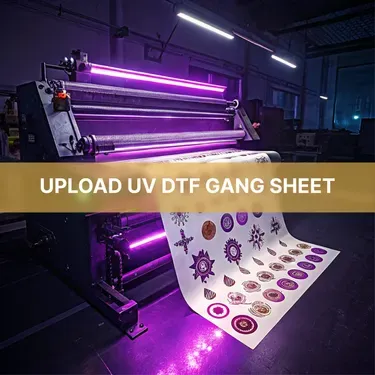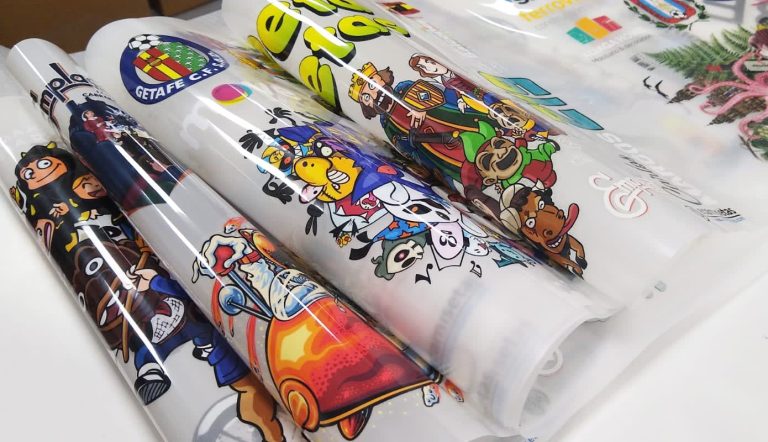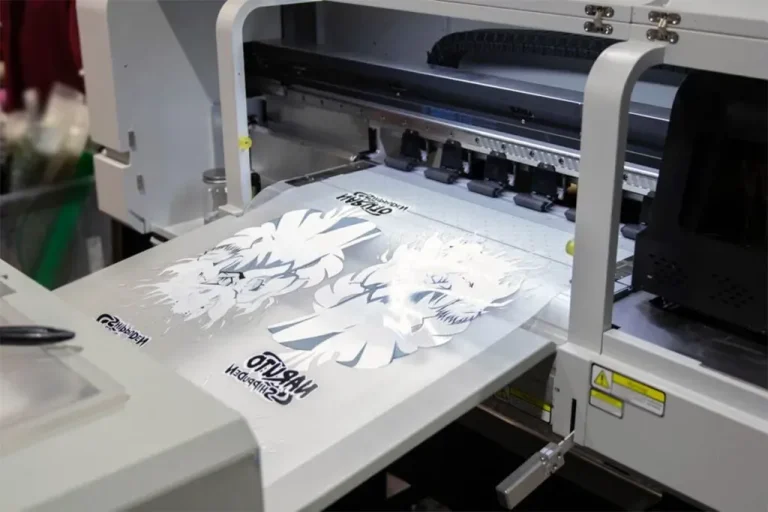
DTF on Hoodies and Sweatshirts is redefining how designers achieve bold, durable graphics on thick fabrics, delivering vibrant color and a soft hand even on textured surfaces. This approach blends digital precision with film-based transfers, enabling crisp edges, smooth gradients, and long-lasting wear on heavy-weight garments such as fleece hoodies and brushed cotton blends. For many studios, selecting the Best heat press for DTF is the difference between consistent results and subtle misreads, since a high-quality press delivers uniform heat, even pressure, and reliable platen contact across dense fabrics. Beyond equipment choices, careful file prep, ink opacity, and powder adhesion also play a critical role, with meticulous pre-press routines helping prevent ghosting and ensuring color fidelity on dark or textured fabrics. Finally, DTF curing and wash care are essential to longevity, guiding post-press curing, color retention through multiple washes, and customer confidence when hoodies and sweatshirts endure repeated wear.
DTF on Hoodies and Sweatshirts: Mastering Thick-Fabric Printing
DTF on Hoodies and Sweatshirts is one of the most reliable methods for achieving bold, vibrant designs on thick fabrics. Using DTF printing for thick fabrics helps preserve color fidelity, even on textured surfaces like fleece or brushed interiors. This approach gives you durable graphics that stay sharp after multiple washes, making it ideal for streetwear, team apparel, and branded hoodies.
In this guide, you’ll learn practical techniques to optimize DTF printing for thick fabrics, including how to prevent edge cracking, manage color gradients, and achieve clean edges on heavy garments. Mastering DTF on Hoodies and Sweatshirts can save time, reduce waste, and deliver consistent results that keep customers satisfied while maintaining a soft hand and comfortable feel.
Materials, Films, and Inks for Thick-Fabric DTF
Choosing the right materials is critical for success with DTF on thick fabrics. Focus on film quality, adhesive strength, and reliable powder transfer to ensure strong bonding on heavy garments. A system designed for thick fabrics will resist cracking around folds and seams, helping your designs endure the wear and washing that thick textiles demand.
In addition to film and powder, select inks with high opacity and robust brightness to maintain vibrant color on dark bases. Align your choices across film, powder, and ink to achieve consistent color reproduction on heavy textures. Using a cohesive DTF system makes it easier to achieve repeatable results and reduces the risk of delamination when garments flex and move.
Heat and Pressure Settings for Thick Garments
Proper heat press settings are foundational for successful DTF on hoodies and sweatshirts. Start with moderate to heavy pressure and a temperature range around 305–325°F (150–165°C) for 12–18 seconds. Thick fabrics often require higher dwell times and careful pressure distribution to ensure the transfer conforms to the fabric’s texture without scorching.
As you work with thicker textiles, you may need to fine‑tune temperature and time for your specific blend. This is where the concept of DTF heat transfer for sweatshirts becomes critical: the transfer’s response to heat and pressure varies with nap, piling, and fiber content. Always perform a test swatch and progressively adjust to maintain vivid color and sharp edges.
DTF Curing and Wash Care: Longevity for Thick Fabrics
DTF curing and wash care are essential for durability on heavy garments. After pressing, allow a full cure in a controlled environment—about 24 hours away from direct sunlight and dust—to let the adhesive reach maximum strength. Proper curing dramatically improves the transfer’s resistance to washing and abrasion on thick fabrics.
For washing, advise customers to turn garments inside out and launder in cold water on a gentle cycle. Avoid high-heat drying which can degrade the print over time. Following clear DTF curing and wash care guidelines helps maintain color fidelity and edge integrity for hoodies and sweatshirts, extending the life of your designs.
Troubleshooting Common Thick-Fabric DTF Issues
Even with careful setup, you may encounter issues like cracking or edge splitting near seams when printing on thick fabrics. Ensure even pressure across the platen and avoid overloading the press. Reducing dwell time slightly while maintaining adequate pressure can often resolve edge cracking on dense fabrics.
Other common problems include dull colors on fleece or brushed interiors, peeling at corners, or ghosting from residual moisture. Verify ink opacity, perform a thorough pre-press to flatten nap, and refresh powder application if needed. A systematic approach to troubleshooting—checking alignment, curing, and wash care—helps you maintain reliable results on heavy garments.
Best Practices for Consistency and Efficiency
To scale DTF with thick fabrics, standardize garment weights and pre-press times to reduce batch variability. Keep a running log of settings for each fabric type, including temperature, time, pressure, and post-press care instructions. Documentation supports repeatability and helps you reproduce successful results across runs.
Investing in a high-quality heat press designed for thicker materials and sustained platen pressure supports consistency and efficiency. This aligns with the idea of the Best heat press for DTF, ensuring uniform heat distribution across folds and seams. Regularly inspect film, powder, and ink quality, and replace worn consumables to avoid color shifts and adhesion failures over time.
Frequently Asked Questions
Why is DTF on Hoodies and Sweatshirts a strong choice for thick fabrics?
DTF on Hoodies and Sweatshirts is a reliable method for thick fabrics because it delivers vibrant, durable graphics with a soft hand and fine detail. In the context of DTF printing for thick fabrics, you can achieve gradient colors and clean edges on textured surfaces, making it well-suited for hoodies, brushed fleece, and heavy sweatshirts.
How does DTF printing for thick fabrics compare to traditional methods on hoodies?
DTF printing for thick fabrics offers advantages over screen printing and heat transfer vinyl on heavy garments. It can reproduce fine details and smooth gradients without a stiff overlay, while reducing color bleed and edge cracking when properly tuned, which is ideal for streetwear, team apparel, and durable branding.
What are the best heat press settings for DTF on Hoodies and Sweatshirts?
Start with moderate to heavy pressure at about 305–325°F (150–165°C) for 12–18 seconds, then adjust for fabric thickness. Use a silicone or teflon sheet and perform a test on a swatch to fine-tune for your specific blend. The aim is consistent heat and pressure to avoid scorching while ensuring good adhesion.
What steps are essential for DTF curing and wash care on thick fabrics?
After pressing, allow the print to cure for at least 24 hours in a controlled environment away from direct sunlight. For care, turn garments inside out, wash cold, and use a gentle cycle with mild detergent; avoid high-heat drying to preserve color and adhesion over time.
How can I troubleshoot common issues with DTF on Hoodies and Sweatshirts?
Common issues like cracking, dull colors, and peeling can stem from uneven pressure, improper transfer size, or insufficient curing. Ensure even pressure, correct transfer placement, proper dwell time, and complete curing. Also verify film adhesion and keep consumables clean and uncontaminated.
How should I choose materials for DTF printing for thick fabrics on hoodies and sweatshirts?
Select a DTF kit and films rated for thick fabrics, prioritizing strong adhesives and good opacity inks. A well-matched system of film, powder, and ink helps prevent delamination and color loss on heavy textures, supporting reliable results in DTF printing for thick fabrics.
| Aspect | Key Points |
|---|---|
| Introduction | DTF on Hoodies and Sweatshirts is reliable for bold designs on thick fabrics; enables durable, color-faithful graphics on textured surfaces; guides focus on thick fabrics with tips to achieve clean edges, crisp colors, and long-lasting results; useful for streetwear, team hoodies, and customized apparel; optimizing DTF for thick fabrics saves time, reduces waste, and boosts customer satisfaction. |
| Why DTF printing for thick fabrics matters | Thicker fabrics absorb ink differently; DTF preserves fine detail and gradient colors without a stiff feel; minimizes color bleed and edge cracking when properly tuned; strong choice for performance wear, team apparel, and fashion brands focused on comfort and durability. |
| Key terminology | DTF printing for thick fabrics; DTF heat transfer for sweatshirts; DTF curing and wash care. |
| Preparing thick fabrics | Start with clean, lint-free garments; light pre-press to remove moisture; align transfer carefully using guides or a stable platen; pre-press the area for 3–5 seconds to reduce moisture and flatten wrinkles; helps prevent ghosting and improves color accuracy, especially on darker fabrics. |
| Choosing materials for thick fabrics | Select a DTF kit and films rated for thick fabrics; film quality and adhesive strength affect bonding and wash performance; robust adhesive with good surface bonding; properly applied powder prevents delamination; inks should have good opacity; ensure a cohesive system across film, powder, and ink. |
| The best heat press settings for thick fabrics | Moderate to heavy pressure to conform to texture; typical settings: 305–325°F (150–165°C) for 12–18 seconds with medium to firm pressure; for very thick fabrics, increase dwell time or adjust temperature to preserve ink color without scorching; use a silicone or teflon sheet; perform a test on a swatch to dial in settings. |
| Curing and wash care for long-lasting results | Let the print cure for at least 24 hours in a controlled environment away from direct sunlight and dust; advise washing inside out in cold water on a gentle cycle with mild detergent; this preserves adhesion and color over multiple washes. |
| Troubleshooting common issues on thick fabrics | – Cracking near seams: ensure even pressure and avoid overloading the heat press; re-check transfer size; consider slightly reducing dwell time and maintaining uniform pressure. – Color dullness on fleece/brushed interiors: verify ink opacity and proper pre-press; test different densities or post-press cure if needed. – Peeling at corners: check film alignment and adhesive quality; refresh powder; ensure complete curing. – Adhesive buildup or ghosting: keep a clean work area; handle transfers with lint-free gloves; keep garment flat during transfer. |
| Best practices for consistency and efficiency | Use standardized garment weights and consistent pre-press times to reduce batch variability; maintain a settings log for each fabric type (temperature, time, pressure, post-press care); invest in a high-quality heat press designed for thicker materials with uniform pressure and heat; regularly inspect film, powder, and ink quality and replace worn consumables to avoid color shifts. |
| Case study example | A small apparel brand switched to DTF printing for thick, brushed fleece hoodies; by choosing a film and adhesive rated for dense fabrics, adjusting dwell time, and implementing 24-hour curing, they achieved crisp colors with minimal cracking after multiple washes; standardizing pre-press routines and care guidelines reduced returns and improved consistency. |
| Maintenance and long-term care tips | Store prints in a clean, dust-free area; launder with gentle detergents and avoid harsh chemicals; perform periodic re-tests after several hundred cycles to ensure continued performance on new fabric blends and adjust settings as needed. |
Summary
DTF on Hoodies and Sweatshirts offers a powerful edge for thick fabrics, blending digital design flexibility with durable, comfortable wear. By focusing on thick-fabric considerations, selecting compatible materials, optimizing heat-press parameters, and following proper curing and wash care protocols, you can achieve high-quality, long-lasting results that stand up to washing, abrasion, and frequent use. Whether you’re printing for fashion, sports, or corporate branding, mastering DTF printing for thick fabrics will help you deliver vibrant graphics with professional polish on hoodies and sweatshirts alike. Remember to document your best practices, stay aware of garment thickness, and continually refine your process to maintain consistency across runs.






